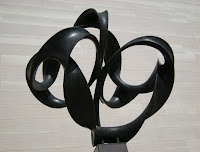1.Describe
the design process; it’s categories and how it is used as you outline step 1, 2
and 3?
Step 1: Identify the Problem
-
Establish
what the problem is and if a solution already exists or if one needs to be
found. Discover the limitations that set the boundaries of the problem, like
criteria or requirments.
Step 2: Generate Ideas
-
Brainstorm
(using a friend to bound ideas of off and listen to their ideas)
-
Mental
inventory (think through your own ideas and memories.
-
Research
(investigate documents, online prints, or images)
-
Lateral
thinking (ideas that are unusual but effective)
-
Thumbnail
sketches (quick, small, very general sketches)
-
Sketch
models (3d equivelents of thumbnail sketches)
-
Written
notations(put all thoughts onto paper)
-
Drawing
(first a presentation to represent idea then a working drawing that is more
technical and schematic)
Step 3: Refine and Analyze
-
Model
and Mock-ups (3d representations of project)
2. Define
Three-dimensional form and find a new example using the research links.
 -Forms having 3 dimensions,
height, width, and depth; forms in actual.
-Forms having 3 dimensions,
height, width, and depth; forms in actual.
3. Define
Space and find a new example using the research links.
ex. Tang Yau Hoong creates two focal points in her 2011 piece, both the negative and positive space create a picture
4. Define
Positive and negative space in3-D form, find a new example using the research
links.
ex. Interior design team that calls themselves “Lilu” created this sculptural piece in which the negative space is just as shapely and interesting as the positive space.
5.Define
Direction and find a new example using the research links.
- The
relationship that defines the orientation of any space between to points.
6. Define
Scale and find a new example using the research links.
-the proportion or ratio that defines the size relationships
-the proportion or ratio that defines the size relationships
ex. Fra Angelico’s Annunciation, though Mary seems to scale with the Arc Angel, if she were to stand she would actually be much taller than the angel or in fact the building itself.
7. Define
Point of view and frame of reference, and find a new example using the research
links.
ex. Lee
Price’s painting of the girl on the dock represents a birds eye view in which
the observer feels they are looking down upon the girl.




